Recently, I posted a video about a plant rescue of Calathea makoyana or ‘Peacock Plant’. During the project I visited my favorite nursery only to find an identical plant, in perfect condition, labeled as Ctenanthe.
What did I buy? It’s common for a plant from the hardware store to be mislabeled, but when I searched online, I found that my ‘Peacock Plant’ was actually a ‘Never-Never’ plant. I’ve been duped!
I know the Marantaceae family has similar traits, but I have yet to meet Ctenanthe and want to know more. Let’s take a dive:
Calathea, Maranta and Ctenanthe:
These three plants belong to the Marantaceae family also known as the Arrowroot family. Arrowroot comes from the starch found in the plants edible rhizome.
Maranta:
The Maranta genus is native to Central and South America and is commonly called the ‘Prayer Plant’. Maranta gets it’s ‘Prayer Plant’ name because of the process called nyctinasty. During the day the leaves are open and as the sun sets leaves fold up as if it were “praying”. The most common species with nyctinasty or praying attribute is M. leuconeura.
Maranta stays closer to the ground and grows in outward clumps. Recommended outdoor use as ground cover.
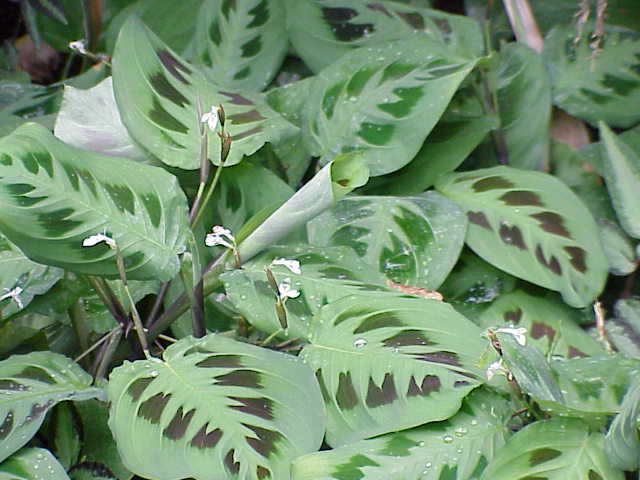
M. leuconeura ‘Prayer Plant’ – Kurt Stüber [1] [CC BY-SA 3.0 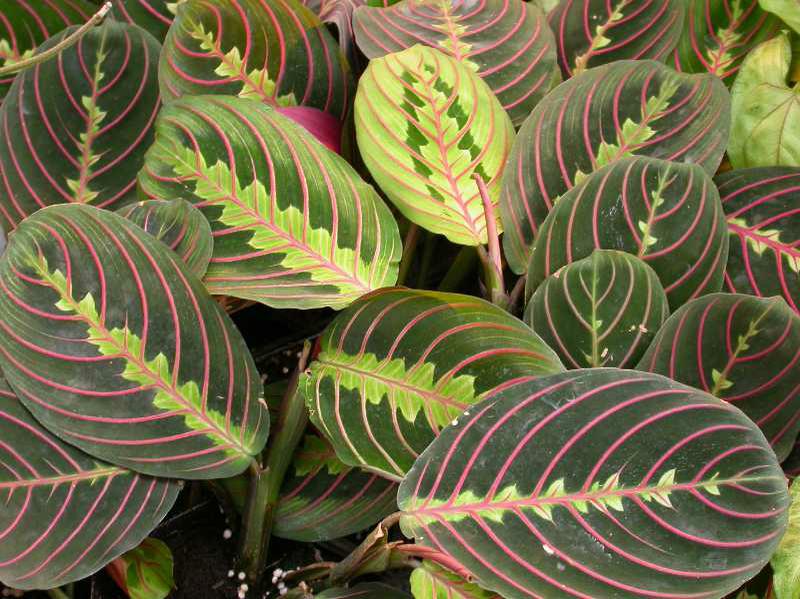
Maranta leuconeura var. erythroneura – Missouri Botanical Garden
Calathea:
Known for interesting foliage and beautiful bright flowers, Calathea is a very popular houseplant. They are also commonly known as ‘Prayer Plant’, but this is not true. The ‘Prayer Plant’ designation is just for the Maranta so buyer beware. Calathea’s leaves are pleated and ovate or oval shaped and sometimes lance-shaped like the ‘Rattle Snake’ plant.
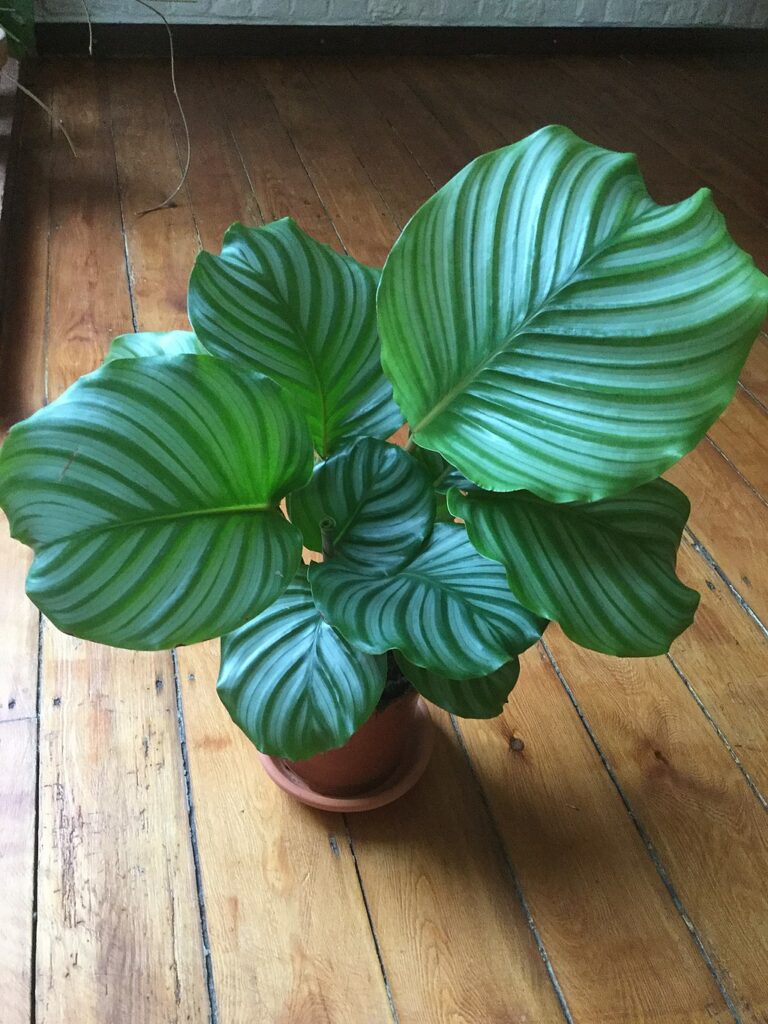
Calathea orbifolia – Fregisseur [CC BY-SA 4.0 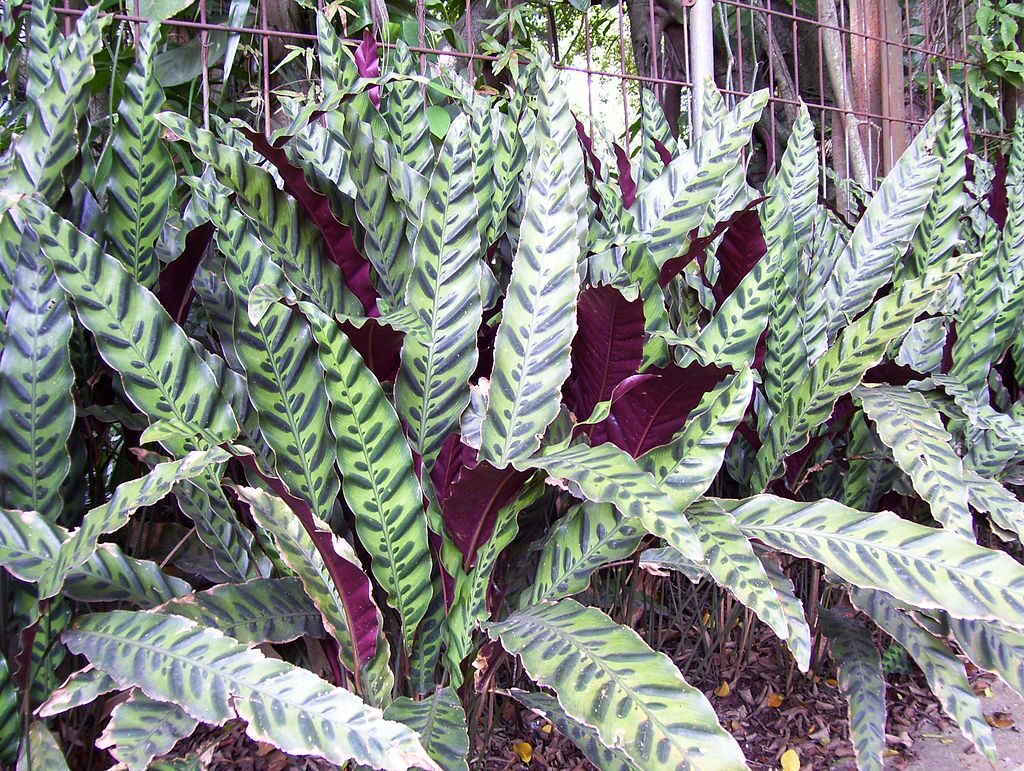
RatteSnake – Serenity [CC BY-SA 3.0
Ctenanthe:
Common name ‘Never-Never’ plant is best known for the species C. lubbersiana This plant has ovate-shaped leaves, striped with bright yellow. Other common species of this plant are Ctenanthe burle-marxii and Ctenanthe oppenheimiana featuring lance-shaped leaves. They grow straight up on stalks with their leaves perching on top fanning out like an umbrella.
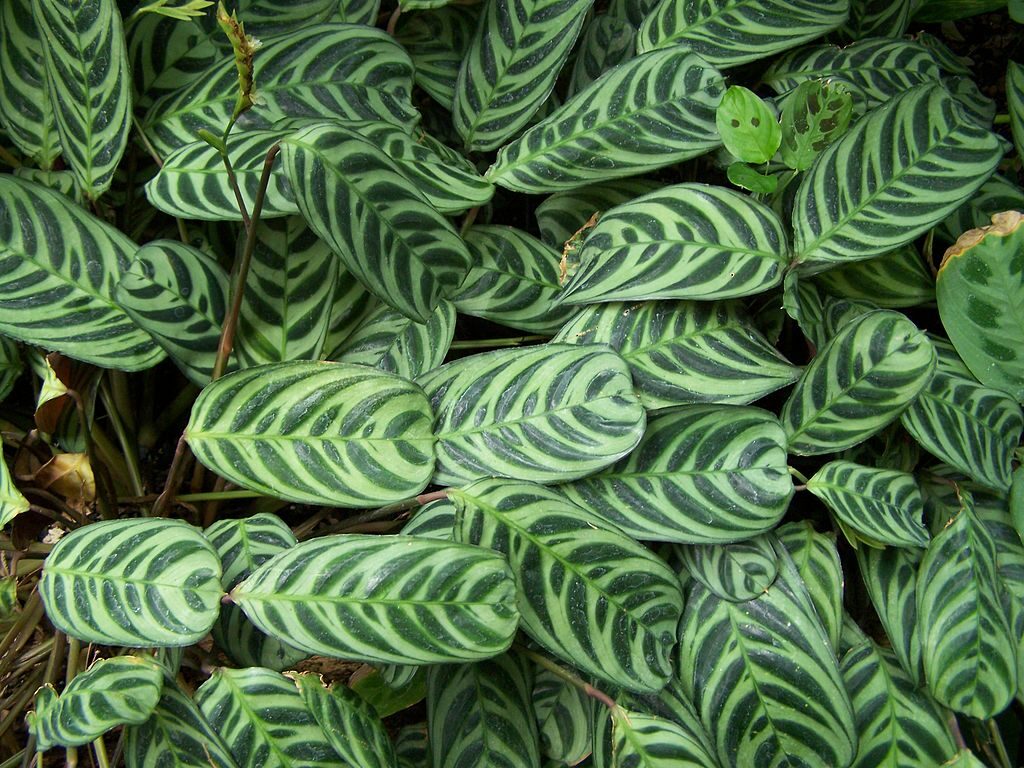
Ctenanthe burle-marxii – Callipides [CC BY-SA 2.0 de 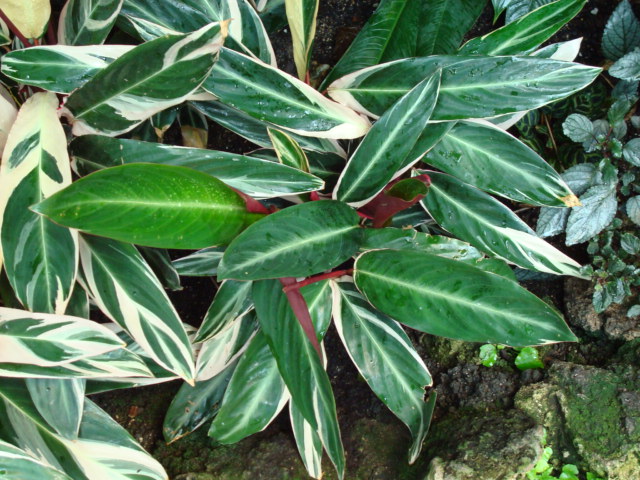
Ctenanthe oppenheimiana – Oeropium [CC BY 3.0
Nyctinasty vs. Photonasty:
Photonasty: a nastic movement associated with changes in light intensity. (response to changes in light)
Nyctinasty: a nastic movement associated with diurnal changes of temperature or light intensity. (movements at night or in dark)
Nastic: the opening and closing of some flowers
Diurnal: opens during the day and closes at night

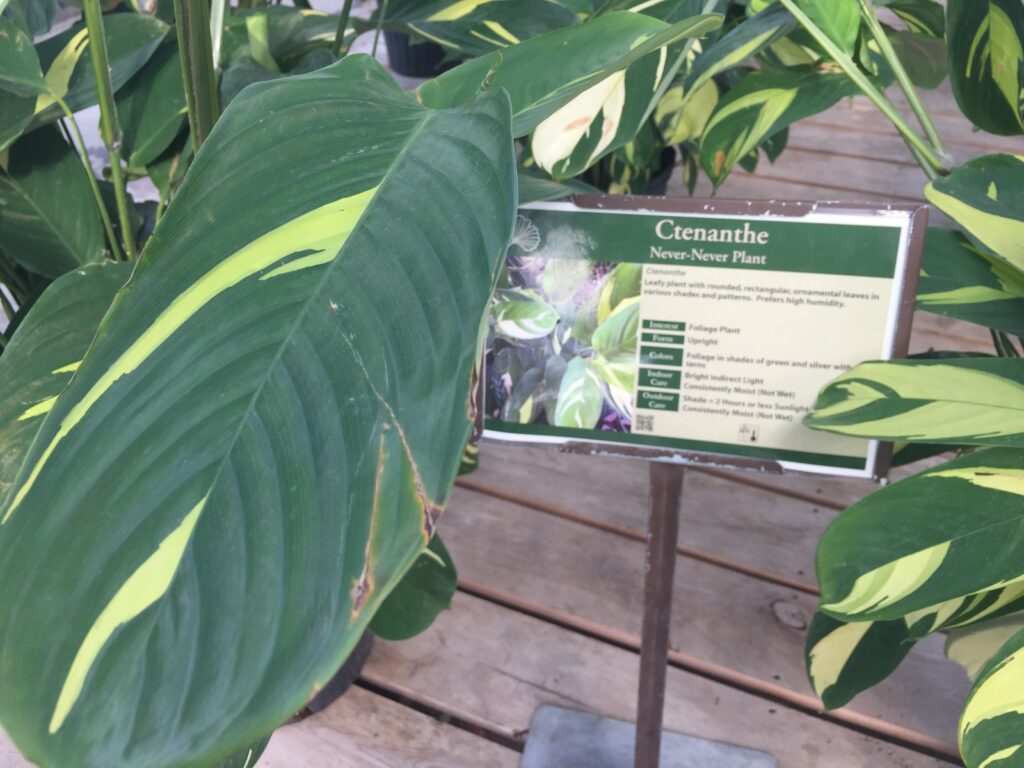
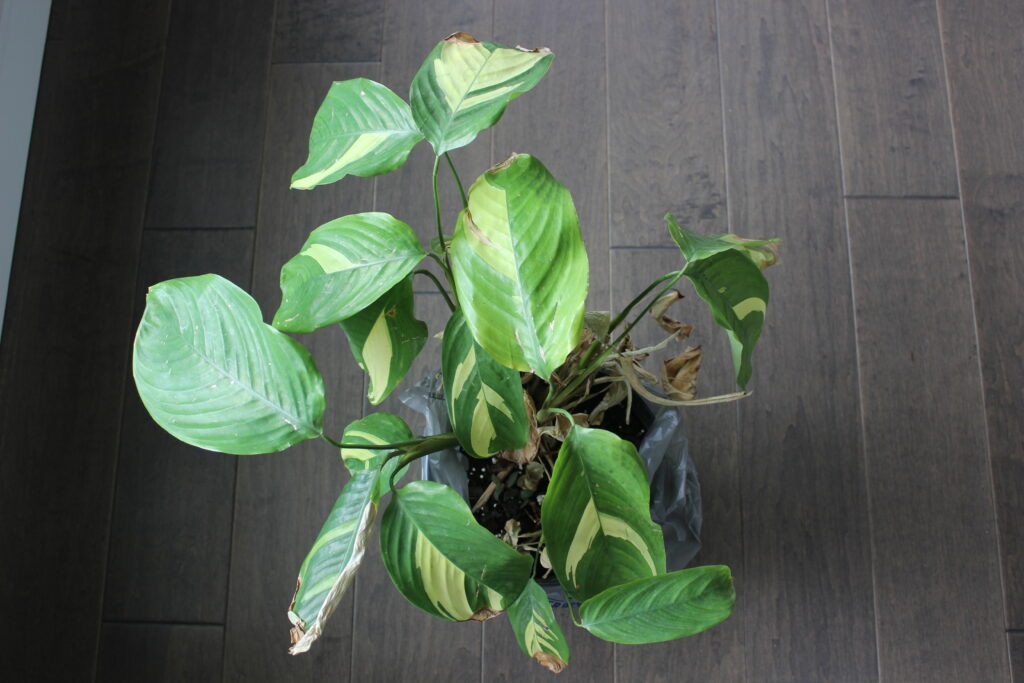

Hi, this article is very interesting because I recently bought a baby Ctenanthe burle marxii with the label “Calathea”, so apparently also the plants shops are a bit confused about it..
There is something that I cannot find out on Google though: I have a Ctenanthe setosa which in some website is called Calathea compact star, or also Calathea setosa. The pictures leave no doubt that these names are referring to the same plant but I would really like to know if my plant is actually a Ctenanthe or a Calathea.. I hope you can help me to identify it
Thank you! 😉
Wow! That is confusing. I did a little digging and I checked out your Instagram and I am not sure. I always love a good challenge so I will keep searching and I will let you know what I find. I have a couple of books that might help. I’ll let you know.
Maranta, Calathea and Ctenanthe : What’s the Diff ?
After reading and looking at the pictures I’m quite sure I’ve got a ‘Ctenanthe burle-marxii . And I thought it was a Calathea. There are a multitude of tiny rust spots on each leaf and I have been unable to find out the problem. I am really unsure as to what the next step should be. Should I throw it out ?Can the leaves be sprayed with something ? Should I repot ?
Can you let me know what you think is wrong with my Ctenanthe or direct me to a site that may be helpful? Many thanks for your time.
Hi Karen,
Would you mind sending me a photo? You can email me at HarpyMedia18@gmail.com or you can DM me on Instagram @SuburbanSill. I would be happy to take a look. I am wondering if the “rust” spots are actually dry patches, which would mean you should increase the watering. Do you see any pests?